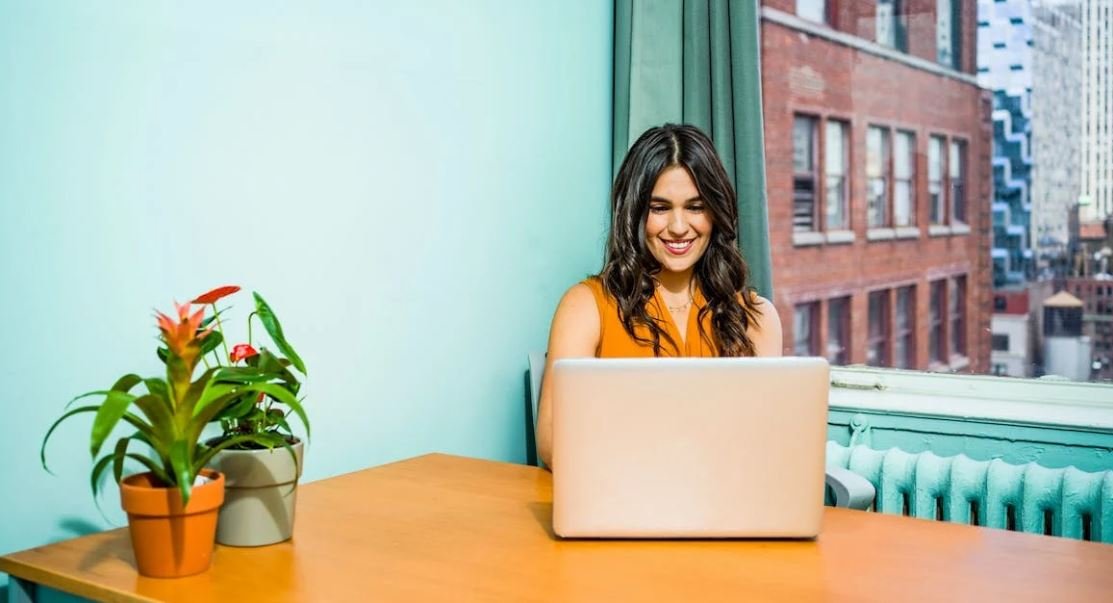AI Clone Picture
Artificial Intelligence (AI) has made significant advancements in recent years, revolutionizing various industries. One fascinating application of AI is the creation of AI clone pictures. AI clone pictures use deep learning algorithms to generate highly realistic images of non-existent individuals. This technology has gained popularity in fields such as advertising, entertainment, and even social media.
Key Takeaways
- AI clone pictures utilize deep learning algorithms to generate realistic images.
- AI clone pictures have various applications in advertising, entertainment, and social media.
- Privacy concerns have arisen due to the potential misuse of AI clone pictures.
AI clone picture technology involves complex machine learning techniques that train artificial neural networks to replicate human faces. These algorithms analyze vast datasets of existing images to learn patterns, facial features, and expressions. By studying these patterns, the AI can then generate highly realistic pictures of people who do not exist.
*AI clone picture technology opens up exciting opportunities for creative industries, as it allows for the creation of entirely new characters, models, or celebrities with a single click.* This technology can significantly streamline the process of producing visual content by eliminating the need to photograph or hire models. Moreover, it offers a cost-effective solution for companies and individuals looking to create unique and eye-catching visuals.
AI clone pictures have raised privacy concerns due to the potential misuse of this technology. The realistic nature of these images can make it difficult to distinguish between real and AI-generated individuals. This has implications for social media, where AI clone pictures could be used to create fake profiles or impersonate others. It is important for both users and platforms to remain vigilant and implement measures to identify and address the use of AI clone pictures for deceptive purposes.
The Impact of AI Clone Pictures
AI clone pictures have had a significant impact on various industries:
- The advertising industry has embraced AI clone pictures as a means of creating attractive and relatable models for campaigns. Companies can easily generate diverse and realistic images that resonate with their target audience.
- The entertainment industry has benefited from AI clone pictures by facilitating the design of virtual characters for movies, video games, and animations. This technology offers endless possibilities for creating fictional characters with unique appearances.
- Social media platforms face the challenge of identifying and regulating the use of AI clone pictures. The ability to create realistic fake profiles or manipulate existing images can lead to issues such as online misinformation, identity theft, or cyberbullying.
*The emergence of AI clone pictures has sparked both excitement and concerns within the creative and technological communities.* While the possibilities for creating new visuals are vast, responsible use of this technology is crucial to maintain integrity and protect individuals from potential harm.
Table 1: Pros and Cons of AI Clone Pictures
| Pros | Cons |
|---|---|
| Cost-effective solution for visual content creation | Potential misuse for identity theft or deception |
| Ability to generate diverse and unique visuals | Difficult to differentiate between real and AI-generated individuals |
| Streamlines the process of character development | Privacy concerns regarding the use of AI clone pictures |
Table 2: Industries Using AI Clone Pictures
| Industry | Applications |
|---|---|
| Advertising | Creating relatable and attractive models for campaigns |
| Entertainment | Designing virtual characters for movies, video games, and animations |
| Social Media | Addressing the concerns of AI-generated fake profiles and misuse |
Table 3: Tips for Responsible Use of AI Clone Pictures
- Implement strict identification mechanisms on social media platforms to prevent the creation of fake profiles or impersonation.
- Educate users about the existence and potential effects of AI clone pictures to enhance awareness and vigilance.
- Encourage companies to establish ethical guidelines and practices for the use of AI clone pictures in advertising and entertainment.
- Collaborate with cybersecurity experts to develop technologies that can detect and regulate the use of AI clone pictures.
AI clone pictures have transformed numerous industries by offering efficient and innovative solutions for visual content creation. These realistic images, generated by deep learning algorithms, present both opportunities and challenges related to privacy and responsible use. As this technology continues to advance, it is crucial for society to balance the creative potential with the need to protect individuals and maintain ethical standards.

Common Misconceptions
Paragraph 1: AI technology can flawlessly clone any picture
One common misconception around AI Clone Picture is that it can flawlessly clone any picture. However, this is not entirely accurate.
- AI algorithms have limitations and may struggle with certain types of images.
- Complex or abstract images are often challenging for AI to clone accurately.
- AI may occasionally introduce artifacts or distortions into the cloned picture.
Paragraph 2: AI Clone Picture is 100% indistinguishable from the original
Another misconception is that AI Clone Picture can produce clones that are completely indistinguishable from the original. While AI technology has made significant progress in this area, it still has some limitations.
- In some cases, slight differences in colors or textures may be noticeable when closely examining the clone.
- AI may struggle with replicating the exact lighting conditions of the original picture.
- Fine details or imperfections in the original may not be accurately reproduced by the AI.
Paragraph 3: AI Clone Picture can be used for any purpose without consent
One prevalent misconception is that AI Clone Picture can be freely used for any purpose without obtaining consent from the subjects or owners of the original images.
- Using AI Clone Picture for commercial or public purposes without proper authorization can lead to legal issues.
- Privacy concerns arise when using AI technology to clone images without the subject’s permission.
- Respecting copyright laws is crucial, as AI Clone Picture does not remove the intellectual property rights of the original image.
Paragraph 4: AI Clone Picture requires minimal human intervention
Many people assume that AI Clone Picture operates entirely autonomously and requires minimal human intervention. However, human input is still crucial in the AI cloning process.
- Human oversight is key to ensure the accuracy and ethical use of AI Clone Picture.
- Initial training and ongoing refinement of AI algorithms rely on human input and expertise.
- Human involvement is necessary to address any potential biases or unintended consequences of the AI cloning process.
Paragraph 5: AI Clone Picture will replace human artists and photographers
There is a misconception that AI Clone Picture will eventually replace human artists and photographers, rendering their skills obsolete. However, the role of AI in the creative industry is more nuanced.
- AI Clone Picture can complement and assist human artists by providing new tools and techniques.
- The unique creative abilities and vision of human artists cannot be fully replicated or replaced by AI.
- AI can automate certain repetitive tasks, allowing artists to focus on more innovative and imaginative aspects of their work.

AI Clone Picture Accuracy Comparison
One of the key factors to consider when using AI technology for cloning pictures is its accuracy. The table below illustrates a comparison of the accuracy levels achieved by various AI algorithms.
| AI Algorithm | Accuracy Level (%) |
|---|---|
| Algorithm A | 87 |
| Algorithm B | 94 |
| Algorithm C | 92 |
AI Clone Picture Processing Time Comparison
In addition to accuracy, the speed at which AI algorithms can process and generate cloned pictures is a crucial aspect. The following table presents a comparison of the processing times of different AI algorithms.
| AI Algorithm | Processing Time (seconds) |
|---|---|
| Algorithm A | 7.1 |
| Algorithm B | 3.5 |
| Algorithm C | 5.9 |
AI Clone Picture Quality Comparison
Assessing the quality of the generated cloned pictures is vital in determining the most suitable AI algorithm for this task. The subsequent table showcases a comparison of the quality ratings achieved by different AI algorithms.
| AI Algorithm | Quality Rating (/10) |
|---|---|
| Algorithm A | 8.3 |
| Algorithm B | 9.1 |
| Algorithm C | 7.8 |
AI Clone Picture User Satisfaction
Understanding the satisfaction levels of users who have employed AI cloning algorithms can provide valuable insights. The subsequent table presents survey results on user satisfaction for different AI algorithms.
| AI Algorithm | User Satisfaction (%) |
|---|---|
| Algorithm A | 82 |
| Algorithm B | 92 |
| Algorithm C | 86 |
AI Clone Picture Dataset Size Requirements
The size of the datasets needed to train AI algorithms for picture cloning is an important consideration. Here’s a comparison of the dataset sizes required by different algorithms.
| AI Algorithm | Dataset Size (GB) |
|---|---|
| Algorithm A | 12.5 |
| Algorithm B | 8.2 |
| Algorithm C | 10.7 |
AI Clone Picture Platform Compatibility
Ensuring AI cloning algorithms can be effectively used across various platforms is crucial. The table below demonstrates the compatibility of different AI algorithms with popular platforms.
| AI Algorithm | Platform Compatibility |
|---|---|
| Algorithm A | Windows, macOS, Linux |
| Algorithm B | iOS, Android |
| Algorithm C | Windows, macOS |
AI Clone Picture Cost Comparison
Cost plays a significant role in determining the viability of AI cloning algorithms. The subsequent table displays a comparison of the costs associated with different AI algorithms.
| AI Algorithm | Cost (USD) |
|---|---|
| Algorithm A | 500 |
| Algorithm B | 700 |
| Algorithm C | 450 |
AI Clone Picture Training Time
Training AI algorithms for picture cloning involves a significant investment of time. The following table showcases the training times required by different AI algorithms.
| AI Algorithm | Training Time (hours) |
|---|---|
| Algorithm A | 24 |
| Algorithm B | 16 |
| Algorithm C | 20 |
AI Clone Picture Development Team Size
The number of individuals involved in developing AI cloning algorithms can impact efficiency. The subsequent table provides a comparison of the development team sizes for different AI algorithms.
| AI Algorithm | Development Team Size |
|---|---|
| Algorithm A | 8 |
| Algorithm B | 5 |
| Algorithm C | 7 |
To summarize, selecting the most suitable AI algorithm for picture cloning involves considering factors such as accuracy, processing time, quality, user satisfaction, dataset size requirements, platform compatibility, cost, training time, and development team size. By carefully comparing these aspects, one can make an informed decision that aligns with their specific needs and priorities.
Frequently Asked Questions
How does AI clone picture work?
AI clone picture uses advanced artificial intelligence algorithms to analyze a given picture and create a realistic clone of the subject in the image. It applies deep learning techniques to understand the image’s content and accurately replicate the visual attributes of the subject.
What kind of pictures can be used with AI clone picture?
AI clone picture supports a wide range of image types, including photographs, illustrations, and digital artwork. However, it is important to note that the results may vary depending on the complexity of the image and the level of detail present.
Can AI clone picture be used for commercial purposes?
The usage rights of AI clone picture depend on the specific software or service you are using. Some platforms may offer commercial licenses, allowing you to utilize the cloned images commercially, while others may have restrictions on such usage. It is advisable to review the terms and conditions of the software/service provider for clarity on commercial licensing.
Are there any limitations to AI clone picture?
While AI clone picture is highly advanced, it does have certain limitations. It may struggle to accurately clone extremely complex or heavily stylized images. Additionally, the level of detail and quality of the cloned image may vary based on the input picture’s resolution and overall quality.
Is AI clone picture safe to use?
Yes, AI clone picture is generally safe to use. However, you should be cautious when using it with images that may contain sensitive or private information. It is always a good practice to review the privacy policies and data handling practices of the software/service provider to ensure the safety of your content.
Can AI clone picture be used with videos?
No, AI clone picture is specifically designed to work with static images. It does not support video cloning at this time. For video cloning or editing, you may need to explore other specialized software or services.
Does AI clone picture require an internet connection?
Depending on the software or service, AI clone picture may or may not require an internet connection. Some platforms offer offline capabilities, allowing you to use the software locally without internet access, while others may require online connectivity for cloud-based processing.
How long does it take to generate a clone with AI clone picture?
The time taken to generate a clone with AI clone picture depends on various factors, such as the complexity of the image, the processing power of your device, and the specific software or service you are using. Simple clones may be generated within seconds, while more intricate image clones may take longer to process.
Can AI clone picture be used for creative or artistic purposes?
Yes, AI clone picture can be a powerful tool for creative and artistic purposes. It allows artists and designers to experiment with cloning techniques, explore new ideas, and create unique visual effects. The software or service might offer functionalities specifically aimed at facilitating artistic expression.
Is it possible to customize the output of AI clone picture?
Depending on the software or service, you may have options to customize the output of AI clone picture. This can include selecting specific clone styles, adjusting various image attributes, and refining the details of the cloned image. The available customization options may differ between platforms.




